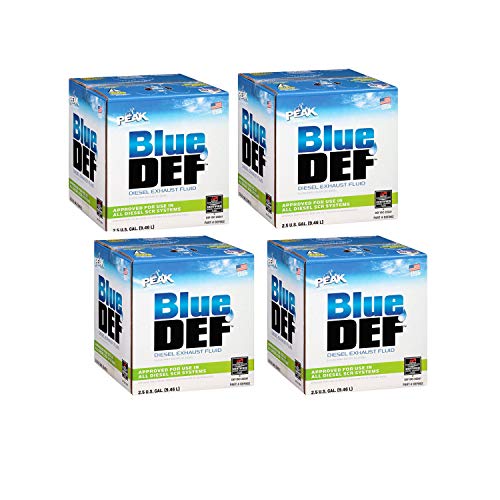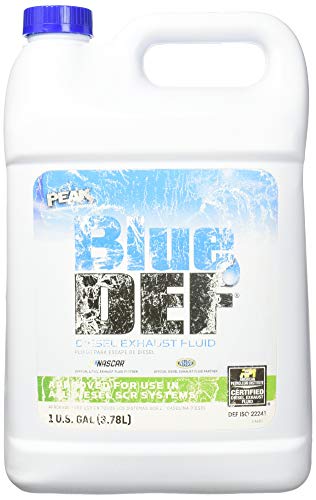
Table of Contents
Background
Truck owners and operators must not allow even a small amount of DEF in their diesel tanks. This will cause contamination of the diesel fuel system.
A simple lapse of judgment could send a vehicle to the scrapyard. Appropriately used, DEF makes the environment much cleaner. Misused, an operator could be facing a disastrous problem.
DEF is a solution of urea and water. Diesel fuel and water-based DEF have different densities and will not mix.
If there is a small amount of DEF in your diesel tank, this is DEF contamination. Do not drive and do not start the engine. Instead, change the fuel filters immediately and your entire fuel system needs to be flushed. Keep in mind that there may be some part repairs or replacements required just from the fluid having been there - especially if you started the engine.
DPF is to be poured into a special tank so that it can be injected into the exhaust pipeline.
Consequences of a Small Amount of DEF in the Diesel Fuel Tank
There are many reasons DEF can get into a diesel fuel tank. For example, filling a dedicated DEF tank with diesel fuel or accidentally using the wrong funnel, are just a few of the possible accidents.
Most operators consider a small amount of DEF will be so diluted by the fuel it cannot damage the engine. This assumption could be a risky and expensive mistake.

DEF in the Diesel Fuel Tank
Depending on circumstances and the advice of diesel mechanics, change fuel filters immediately.
Continue to replace all filters until the diesel fuel has been exhausted from the tank. If an operator senses any malfunctions in the engine’s behavior, take the vehicle to a trusted mechanic.
What Happens If The Engine Is Started?
Fuel delivery is a gravity-fed system. DEF is 67.5% water and will accumulate at the bottom of a fuel tank.
If there is a considerable amount of DEF in the fuel system, it is doubtful the engine will start because there is a loss of combustion.
A smaller amount of DEF and the engine may start, but the operator will notice severe performance issues.
- The vehicle is hesitating or experiencing problems accelerating. Again, the engine is having trouble with combustion.
- The vehicle sputters, revs or jolts to a start. This action results when the injectors have water-based DEF being sucked into the system. The sudden acceleration occurs when pure diesel fuel flows into the injectors.
- The diesel engine stalls out on the highway after starting. If there is a negligible amount of DEF in the fuel system, the engine may start but cannot continue. The water-based DEF is hindering combustion.
Can Any Engine Parts Be Damaged?
Damage to a diesel can be linked directly to the amount of DEF allowed into the fuel system. Only a teaspoon and the system may be OK.
More than that and the engine will be in trouble.
- DEF is denser than diesel fuel and will settle to the bottom of the fuel tank. DEF will rust the tank, further contaminating the system.
- A diesel engine relies on precise amounts of fuel injected into the combustion chamber. Because of the increased pressures required, there is a higher specification for fuel density with diesel injectors. DEF contamination generates greater stresses on the injectors and could result in failure. Filters will remove contaminates to a degree.
- Fuel lubricates a fuel pump. Any DEF contamination will inhibit that operation. If the key is turned on, DEF is forced further into the fuel lines.
- Faulty gaskets along the fueling system can cause DEF to leak into the oil sump. If this takes place, DEF and oil creates sludge and will affect the lubrication of the engine.
- A combination of the above circumstances or an individual instance may cause engine seizure. Again, depending on the extent of DEF contamination.
How to Get DEF Out of A Diesel Tank?

Small amount of def in diesel tank
DEF is by far the worst contamination that can happen to a diesel fuel system.
If an operator suspects DEF contamination and the vehicle key has not been turned to the ON position, the fix could be as straightforward as dropping the tank and flushing the fuel lines.
It is imperative to have the vehicle towed to a qualified mechanic before the key is turned.
DEF is corrosive, letting the material sit in a fuel system will lead to further contamination.
Some fuel additives may work, however, choosing this route is not guaranteed. Adding fuel driers may be considered.
Examples of these would be DFS Plus. Several local and national brand companies specialize in cleaning DEF contaminated fuel tanks.
Depending on the situation, the cleaning company will deliver a mobile unit to the location. If the tech feels the problem can be solved on site, they have the capabilities to finish the job.
If DEF contamination is pervasive, the vehicle is towed back to their shop for cleaning.
How to Repair A Diesel Exhaust Fluid Contaminated Fuel System
DEF in the diesel tank will take several steps to clean:
- Every heavy-duty truck and pickup will have different stages for cleaning. Access to the fuel system of an 18-wheeler is more accessible, because of the open cab design. Pickups or heavy-duty trucks may require lifting the body from the frame to gain full access.
- DEF contamination requires removing everything from the primary fuel tank to the injectors. Fuel coolers, pumps, and switching valves must be replaced. These are functional areas for DEF crystals to hide.
- Plastic tanks and intakes can be pulled out, cleaned thoroughly and reused.
- Service technicians will dismantle the entire fuel system. Some engines have aluminum manifolds and fuel rails; they must be disposed of. DEF is corrosive to aluminum.
- Injector feed lines and injectors must be discarded. There are some that maintain injectors can be cleaned and replaced. Others argue it is not worth the time or capital to replace a fresh fuel system with contaminated injectors. A fuel system contaminated with just water and the parts may be salvageable. DEF contamination does not tolerate this; components must be disposed of and replaced.
Costs associated with cleaning a DEF contaminated fuel tank will vary depending on the circumstance.
Factors include the volume of DEF into the fuel system, a vehicle’s location, type of vehicle. If there is heavy DEF contamination make, model and year are extremely important.
Older models do not have the same sophistication as newer diesel engines. How long has DEF been in the system?

How to Repair A Diesel Exhaust Fluid Contaminated Fuel System
Dealership service departments may quote between $12,000 to $20,000 to clean a DEF contaminated vehicle.
With some situations, the clean-up would be higher than the vehicle is worth. A less severe DEF contamination would involve dropping the fuel tank and thorough cleaning.
Mechanics quote between $2,000 to $5,000 for this level of clean-up.
How To Avoid Contaminating Your DEF With Diesel Tank
As with any other issue, prevention is the best option. In this case, there are a few ways to avoid mistakenly putting ZDEF in your fuel tank in the first place:
-
Normally, DEF fillers have blue caps, which are normally smaller than your regular fuel tank cap.
-
Some manufacturers put the DEF filler under the hood. This is great because it reduces the chance of mistake because the DEF cap is not right next to the fuel cap. However, if you’re not familiar with what’s under your hood, you might mistakenly add DEF to the fuel tank.

How To Avoid Contaminating Your DEF With Diesel Tank
Best DEFs On Amazon
- One gallon of is used approximately every 300 miles
- A truck with a 20 gallon DEF tank can go up to 6000 miles between fill-ups
- When used in an SCR system will reduce the levels of NOx emissions of those engines
- ENGINEERED: For use in Selective Catalytic Reduction (SCR) systems on diesel engines
- EFFICIENCY: BlueDEF diesel exhaust fluid is key to helping improve fuel economy by up to five percent
- PROTECTION: Diesel exhaust fluid is non-toxic and safe to handle
- QUALITY: Stable, colorless and odorless, and also meets ISO Standards 22241 for purity and composition
- EFFORTLESS: Easily Inject the fluid into your exhaust stream with a specialized dosing module
Key Takeaways
The best advice to avoid a small amount of DEF in diesel tank is to just Pay Attention.
 by
by 
